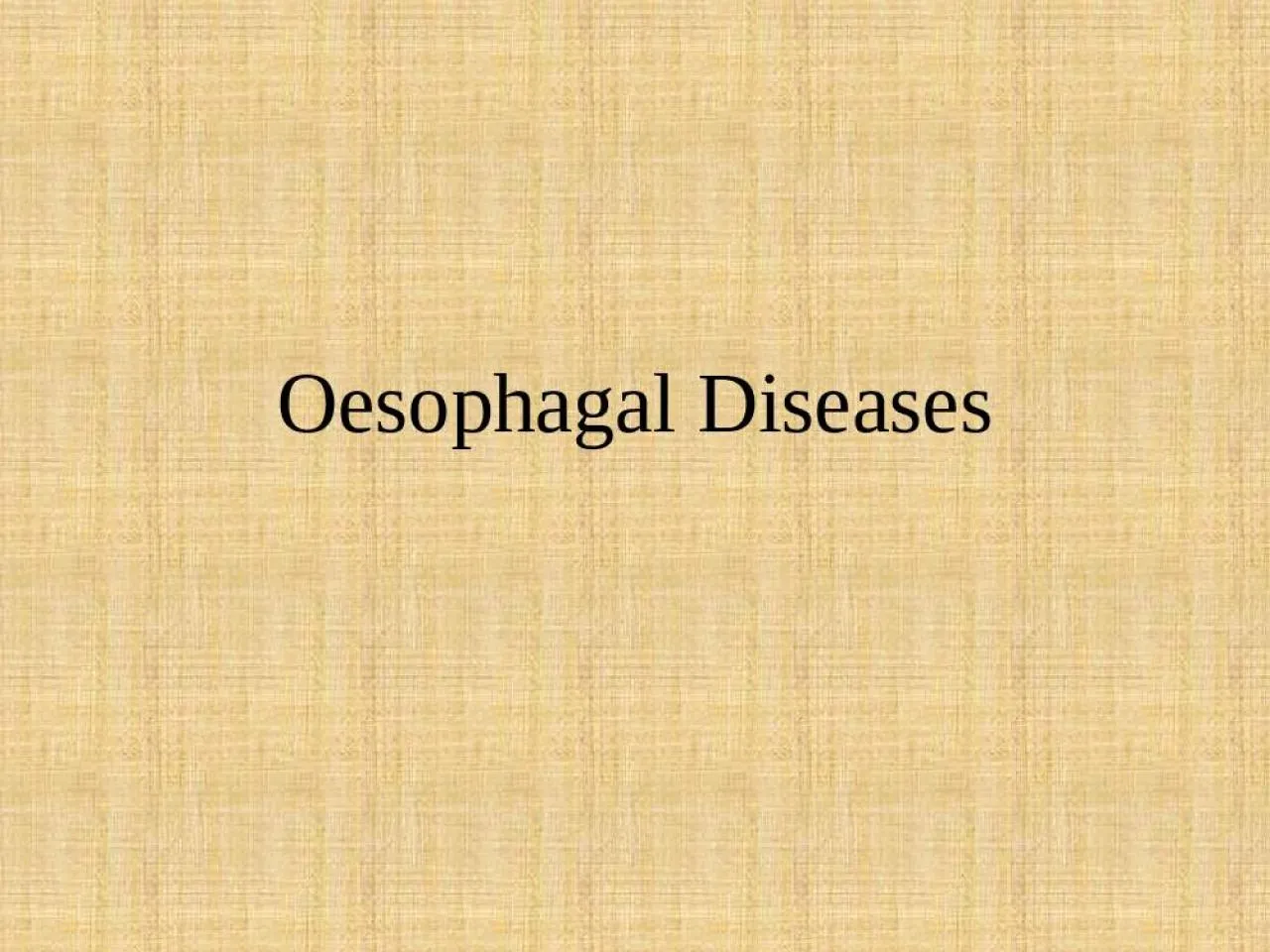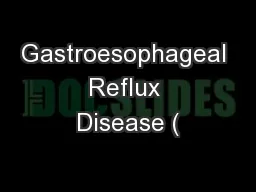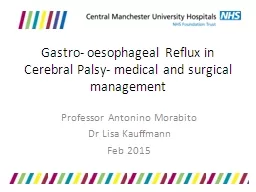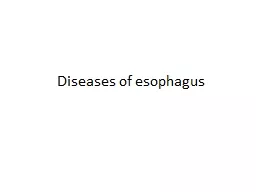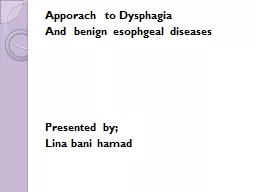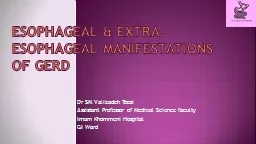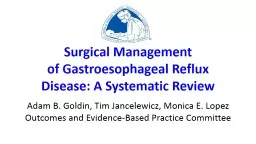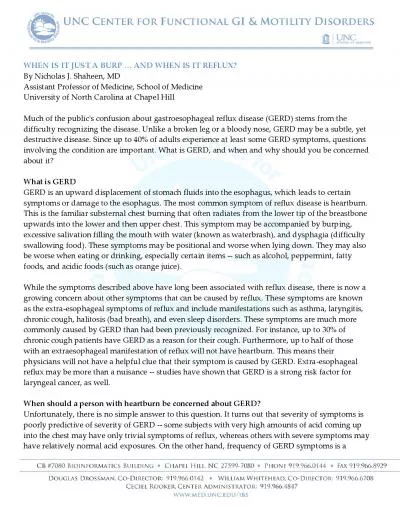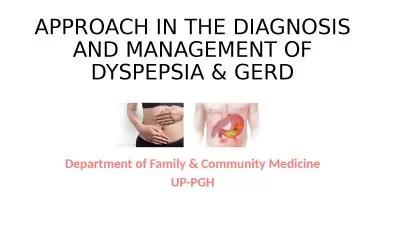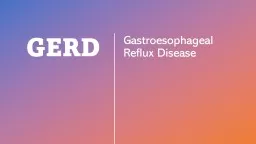PPT-Oesophagal Diseases Gastro-esophageal Reflux Disease (GERD)
Author : martin | Published Date : 2022-05-31
ACG define Symptoms or mucosal damage produced by the abnormal reflux of gastric contents into the esophagus which are Often chronic and relapsing Pathophysiology
Presentation Embed Code
Download Presentation
Download Presentation The PPT/PDF document "Oesophagal Diseases Gastro-esophageal R..." is the property of its rightful owner. Permission is granted to download and print the materials on this website for personal, non-commercial use only, and to display it on your personal computer provided you do not modify the materials and that you retain all copyright notices contained in the materials. By downloading content from our website, you accept the terms of this agreement.
Oesophagal Diseases Gastro-esophageal Reflux Disease (GERD): Transcript
Download Rules Of Document
"Oesophagal Diseases Gastro-esophageal Reflux Disease (GERD)"The content belongs to its owner. You may download and print it for personal use, without modification, and keep all copyright notices. By downloading, you agree to these terms.
Related Documents

